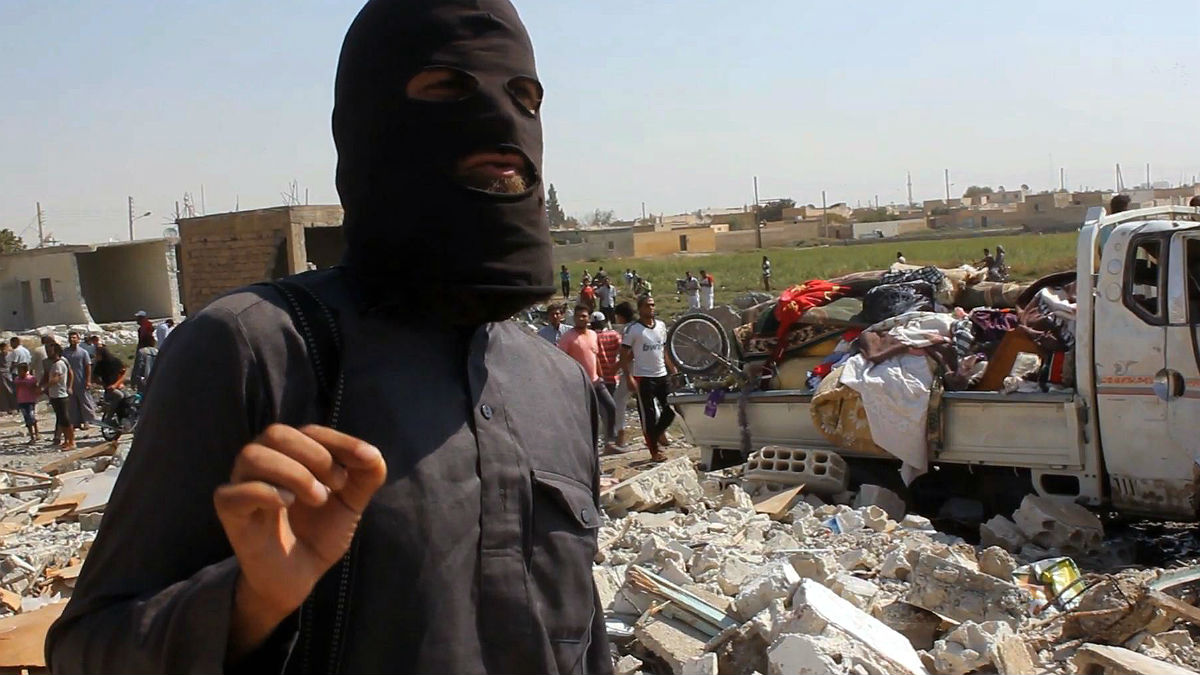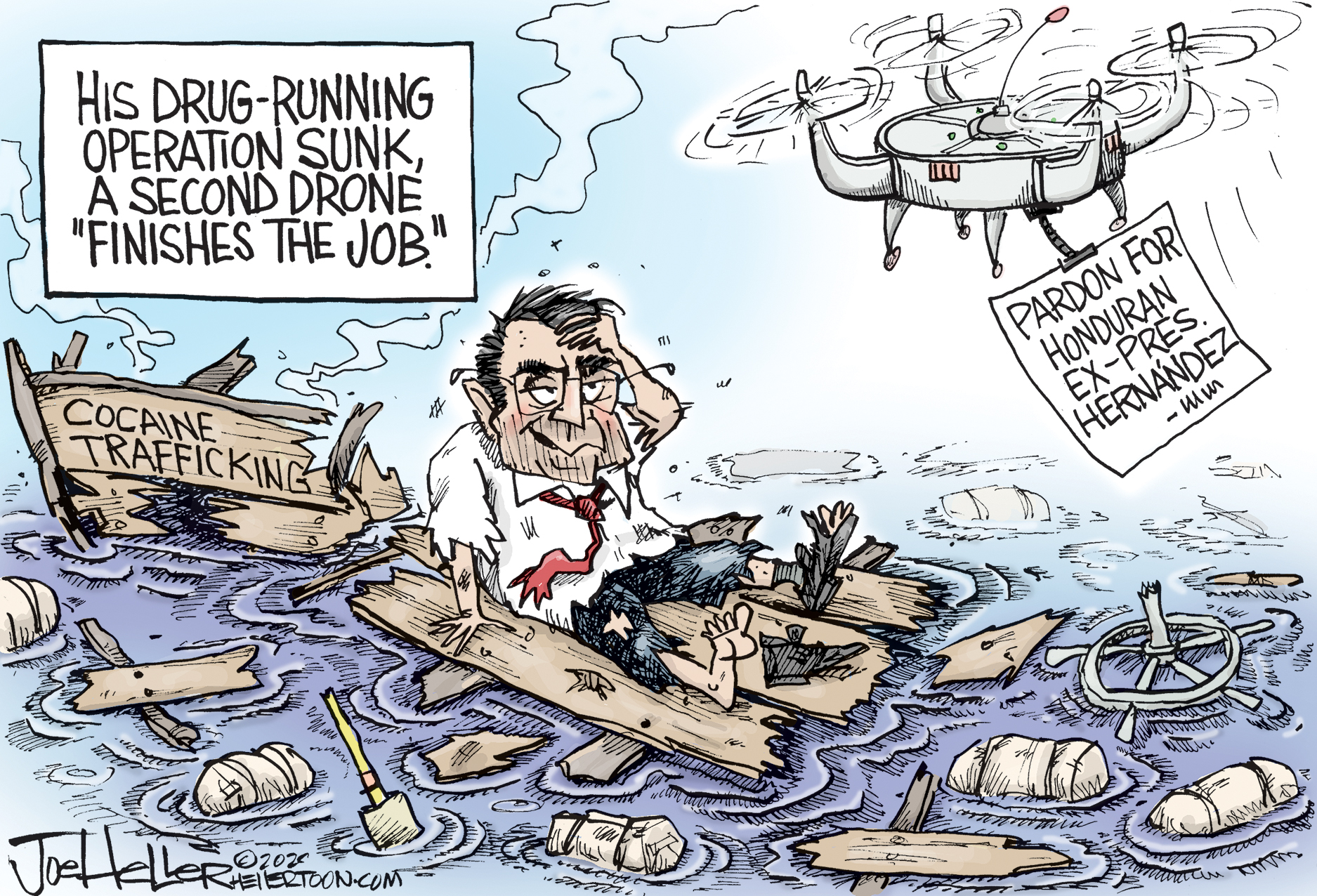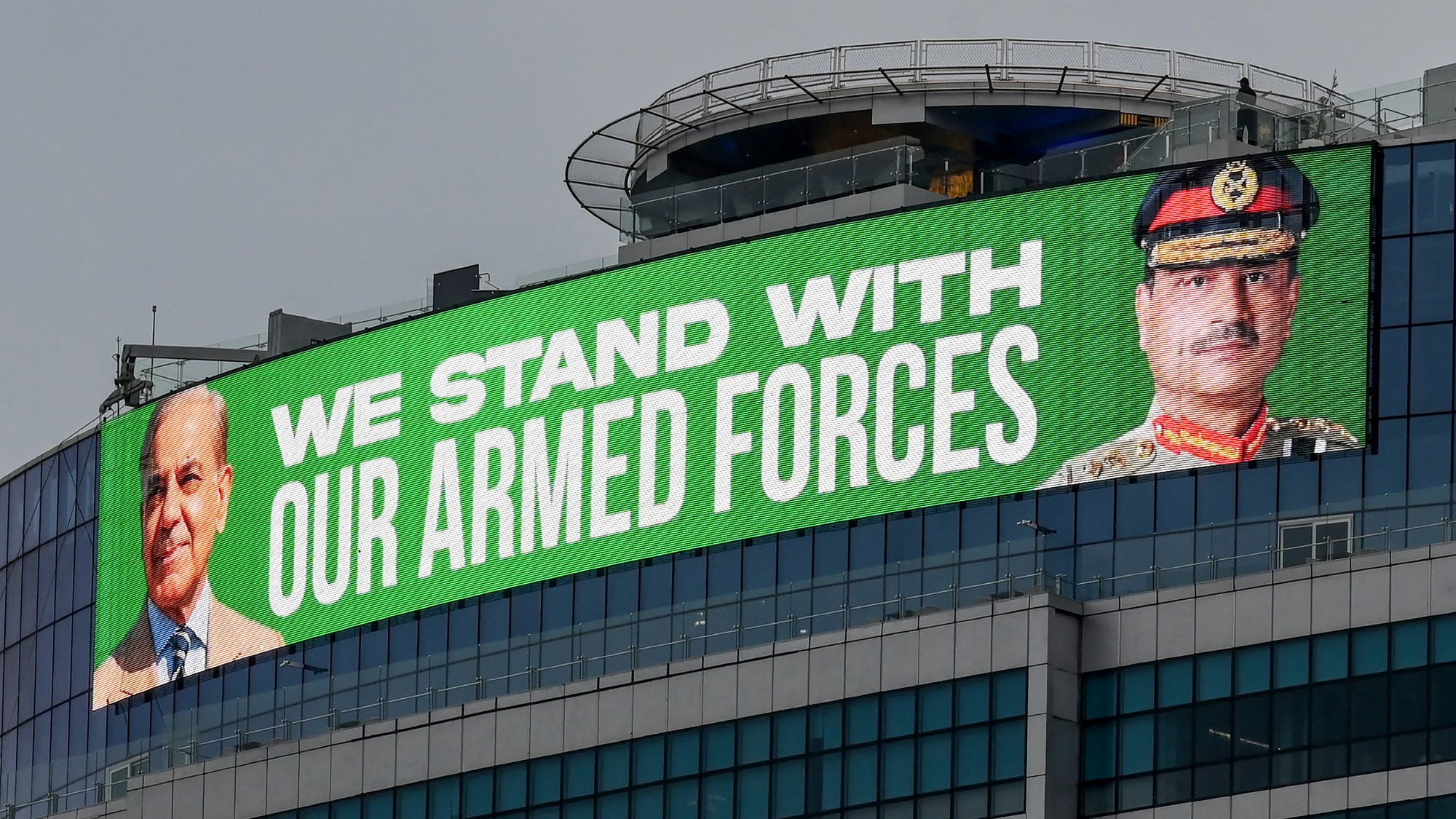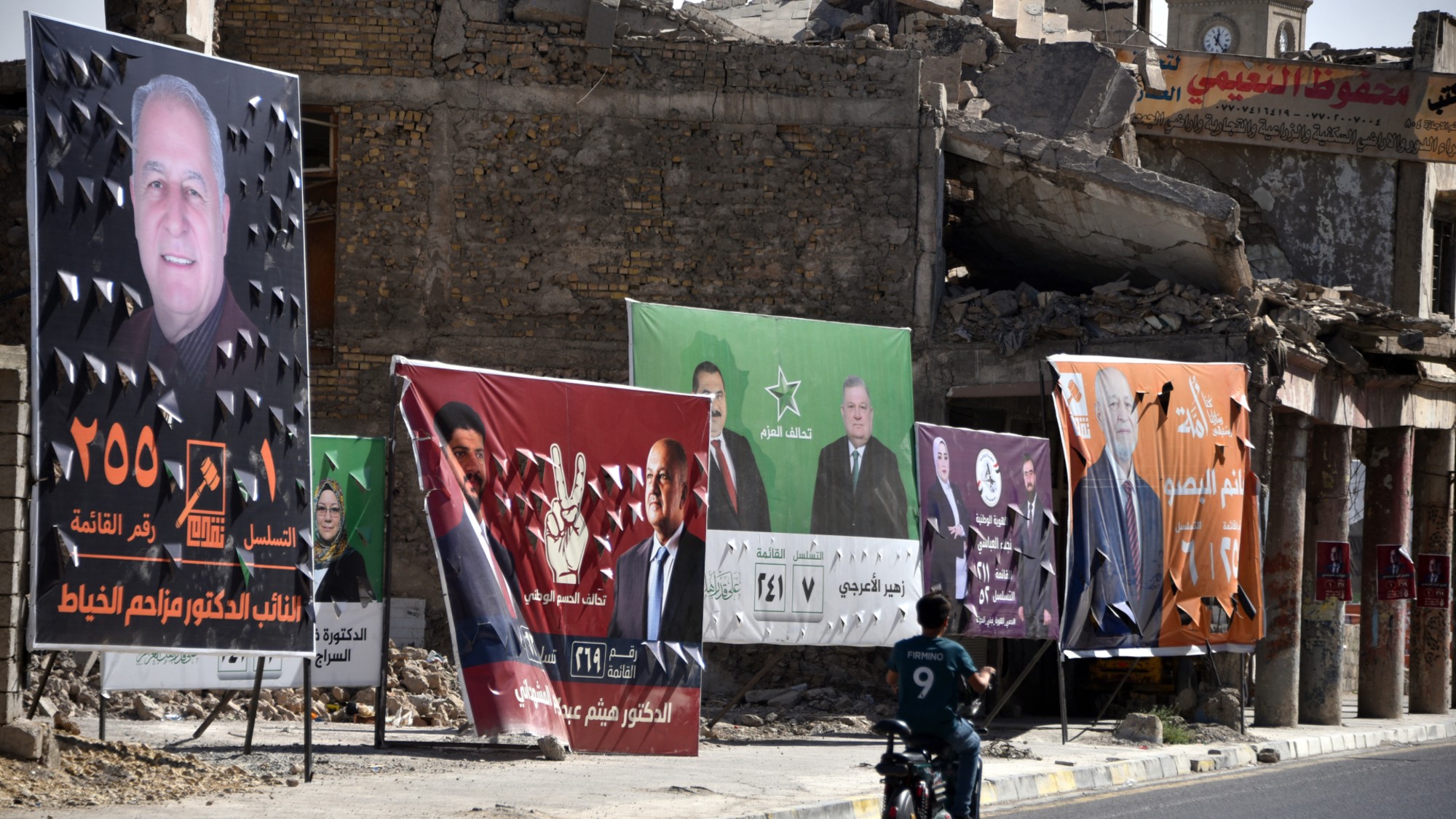Isis: what does the future hold for the terror group?
Spies confirm identity of new Islamic State leader

The new leader of Islamic State (Isis) has been confirmed as Amir Mohammed Abdul Rahman al-Mawli al-Salbi, according to spies at two intelligence agencies.
Salbi is one of the group’s founding member’s, and his previous roles in the organisation include leading the enslavement of Iraq’s Yazidi minority, and overseeing global operations.
In the three months since the former leader Abu Bakr al-Baghdadi was killed, spies have placed Salbi at the centre of Isis decision-making. He is viewed as a “hardened veteran in the same vein as Baghdadi, unflinching in his loyalty to the extremist group”, says The Guardian.
The Week
Escape your echo chamber. Get the facts behind the news, plus analysis from multiple perspectives.

Sign up for The Week's Free Newsletters
From our morning news briefing to a weekly Good News Newsletter, get the best of The Week delivered directly to your inbox.
From our morning news briefing to a weekly Good News Newsletter, get the best of The Week delivered directly to your inbox.
Salbi has a background as an Islamic scholar, and gave religious rulings underwriting the genocide against Yazidis and the emptying of the Nieveh Plains in northern Iraq during the height of the Isis campaign.Here’s a look at the story behind the world’s most notorious terror group.
So how did Isis start?
Isis was regarded by the West as a terrorist organisation even before it began its murderous rampage across the Middle East. The group traces its roots back to 2004 and Jordanian Abu Musab al-Zarqawi, who pledged allegiance to Osama Bin Laden and formed al-Qa’eda in Iraq (AQI).
After Zarqawi’s death in 2006, AQI created Islamic State in Iraq (ISI), an umbrella group weakened by US troops and the creation of Sahwa councils by Sunni Arab tribesmen.
A free daily email with the biggest news stories of the day – and the best features from TheWeek.com
Abu Bakr al-Baghdadi – real name Ibrahim Awad Ibrahim al-Badri al-Samarrai – became leader in 2010 and rebuilt Isis’s capabilities. By 2013, it was carrying out dozens of attacks in Iraq every month. In April 2013, Baghdadi merged his forces in Iraq and Syria and created Islamic State in Iraq and Syria Levant (Isis).
In mid-2014, the group overran Mosul in Iraq and, after consolidating its hold over dozens of cities and towns, declared the creation of a caliphate, changing its name to Islamic State.
In mid-October, President Trump made the controversial decision to pull US troops out of northern Syria, leaving Kurdish fighters in the region – who had helped the US fight against Isis – to the mercy of a Turkish invasion. Since the withdrawal by US troops, more than 100 Isis prisoners held by Kurdish forces are thought to have escaped in the chaos, according to the US government.
However, despite this boost, the death of Baghdadi this week could be a major blow to the group’s capabilities.
Is it really Islamic?
Isis claims to be the sole representative of true followers of Islam and has executed large numbers of Muslims whose understanding of the Koran differs from its own narrow interpretation.
World leaders have described the group as “un-Islamic” and surveys have found very little support for the group among Western Muslims.
However, experts say Isis believes itself to be religious, whatever other Muslims feel, and that makes it harder to fight.
“Islam is capable of multitudes of interpretations, like any other grand religious tradition,” academic Graeme Wood, who has studied the group, told Prospect magazine.
“If you’re saying that something has ‘nothing to do with Islam’ because it is being practised by a minority, then you’re implying that Muslim minorities have nothing to do with Islam.
“You are signing up for a majoritarian view of Islam, and that is very dangerous.”
Is it really a state?
“At its peak, in 2014-15, [Isis] ruled a territory the size of Britain containing a population of eight million people,” writes Daniel L. Byman, a senior fellow in the Washington DC-based Center for Middle East Policy, in an article for the Brookings Institution think tank.
Isis viewed itself as an independent state, with its own administrative buildings, courts, street signs, taxation system and newspaper.
More than 40,000 foreigners from across the world are believed to have emigrated to the caliphate, which never received international recognition.
However, in a double blow in 2017, Isis lost control of Mosul, its largest city in Iraq, and Raqqa, its de facto capital in Syria. By the end of March 2019, its last village was retaken and the caliphate had crumbled.
What does the future hold for Isis?
New leader Salbi has used his first three months in charge to attempt to consolidate the Isis leadership, most of whom are much younger than Salbi himself.
And while Isis is yet to regain “anything like the juggernaut-like momentum” that threatened regional order in 2014, it has shown signs of regrouping since it lost its last physical foothold in Syria in March 2019, says The Guardian.
Kurdish forces in Iraq have long warned of a possible increase in attacks in the centre and north of the country. The group itself claims to have carried out 106 attacks between 20 and 26 December in revenge for the killing of Baghdadi and the Isis propaganda chief, Abu Hassan al-Muhajir, on 27 October.
A senior Iraqi Kurdish official said: “We’ve seen significant uptick in Isis attacks from mid last year.
“Their rural networks remain very much intact; after all, Isis members in Iraq still receive monthly salaries and training in remote mountainous areas. That network allows the organisation to endure, even when militarily defeated.”
In a detailed report in March last year, the Washington Post reported that “jihadists retain thousands of fighters in clandestine cells scattered across Syria and Iraq, as well as affiliates in Afghanistan, Egypt, the Philippines, Libya, Burkina Faso and elsewhere”.
But Isis is a long way from having the capability to retake territory, says Brigadier General William Seely, who commands US-led coalition forces in Iraq.
“These are people who are hiding out. They only come out at night to harass and take potshots,” he said. “You can’t run a revolution or create your own caliphate if that’s all you do.”
Despite that, intelligence officials will feel nervous about the lack of information they have on where Salbi is, their best guess being that he is likely to have stayed in a small band of towns to the west of Mosul.
The biggest residual threat posed by Isis remains the al-Hol and al-Roj camps in Syria, controlled by Syrian Kurdish forces.
The camps house Isis members and their families, and some areas are so dangerous that security forces cannot enter. European intelligence officials fear a mass breakout from the overstretched prisons.
-
 Political cartoons for December 6
Political cartoons for December 6Cartoons Saturday’s political cartoons include a pardon for Hernandez, word of the year, and more
-
 Pakistan: Trump’s ‘favourite field marshal’ takes charge
Pakistan: Trump’s ‘favourite field marshal’ takes chargeIn the Spotlight Asim Munir’s control over all three branches of Pakistan’s military gives him ‘sweeping powers’ – and almost unlimited freedom to use them
-
 Codeword: December 6, 2025
Codeword: December 6, 2025The daily codeword puzzle from The Week
-
 Femicide: Italy’s newest crime
Femicide: Italy’s newest crimeThe Explainer Landmark law to criminalise murder of a woman as an ‘act of hatred’ or ‘subjugation’ but critics say Italy is still deeply patriarchal
-
 Brazil’s Bolsonaro behind bars after appeals run out
Brazil’s Bolsonaro behind bars after appeals run outSpeed Read He will serve 27 years in prison
-
 Americans traveling abroad face renewed criticism in the Trump era
Americans traveling abroad face renewed criticism in the Trump eraThe Explainer Some of Trump’s behavior has Americans being questioned
-
 Why these Iraqi elections are so important
Why these Iraqi elections are so importantThe Explainer The US and Israel are increasingly pressuring Baghdad to tackle Iran-backed militants, while weakened Iran sees Iraq as a vital remaining ally
-
 Nigeria confused by Trump invasion threat
Nigeria confused by Trump invasion threatSpeed Read Trump has claimed the country is persecuting Christians
-
 Sanae Takaichi: Japan’s Iron Lady set to be the country’s first woman prime minister
Sanae Takaichi: Japan’s Iron Lady set to be the country’s first woman prime ministerIn the Spotlight Takaichi is a member of Japan’s conservative, nationalist Liberal Democratic Party
-
 Russia is ‘helping China’ prepare for an invasion of Taiwan
Russia is ‘helping China’ prepare for an invasion of TaiwanIn the Spotlight Russia is reportedly allowing China access to military training
-
 Interpol arrests hundreds in Africa-wide sextortion crackdown
Interpol arrests hundreds in Africa-wide sextortion crackdownIN THE SPOTLIGHT A series of stings disrupts major cybercrime operations as law enforcement estimates millions in losses from schemes designed to prey on lonely users